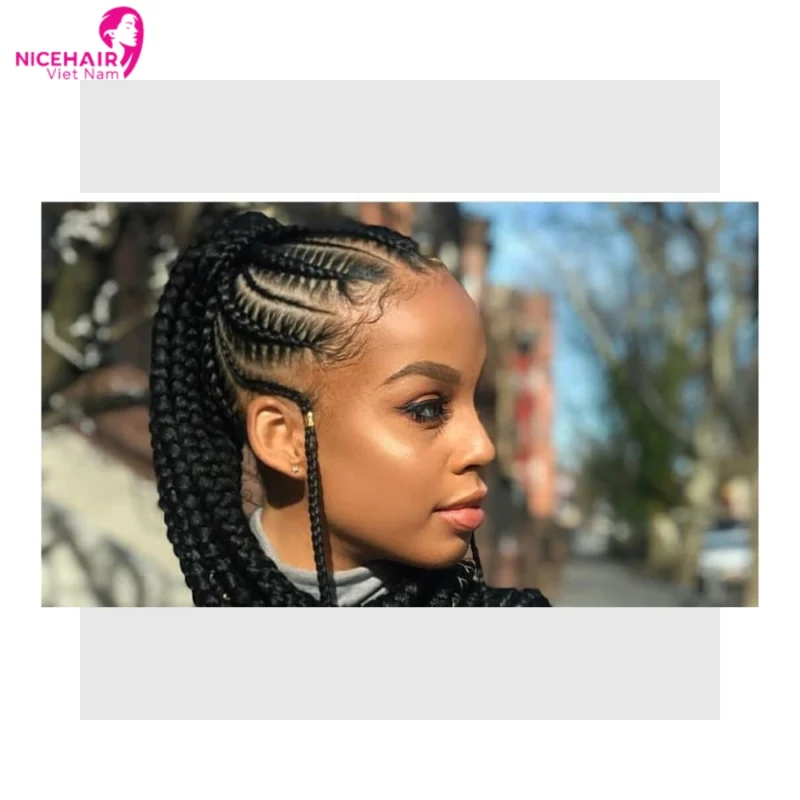Introduction
In the competitive world of the wholesale hair industry, maintaining and adhering to quality standards is of paramount importance. This introduction will provide a clear understanding of quality standards in the context of wholesale hair, highlight their significance for both suppliers and buyers, and provide a brief overview of the topics that will be explored in this discussion.
Definition of quality standards in the context of wholesale hair
Quality standards in the context of wholesale hair refer to the established criteria and benchmarks that define the level of excellence, durability, and consistency expected from hair products and extensions sold in bulk. These standards encompass various aspects, including the source and origin of the hair, processing methods, texture, color, length, and overall product quality. Wholesale hair quality standards set the bar for excellence and reliability in the industry.
Importance of quality standards for both suppliers and buyers
- Suppliers: For wholesalers and manufacturers of hair products, adhering to strict quality standards is a fundamental necessity. It ensures that their products meet the expectations of customers and maintain a positive reputation in the market. Consistently high-quality hair not only attracts loyal customers but also minimizes returns, complaints, and potential legal issues. Moreover, compliance with quality standards often leads to better business relationships with retailers and distributors.
- Buyers: Quality standards are equally vital for buyers in the wholesale hair market. Hair salons, retailers, and individual customers rely on these standards to make informed purchasing decisions. Knowing that they are receiving a product that meets certain quality benchmarks gives buyers confidence in their choices. High-quality hair extensions, weaves, wigs, and other products ensure customer satisfaction, reduce styling time, and provide a lasting, natural look.
Overview of the topics to be covered in the discussion
Throughout this discussion, we will delve into various aspects of quality standards in the wholesale hair industry:
- Determining quality standards: We will explore how quality standards for wholesale hair are established, including factors such as sourcing, processing, and grading.
- Impact on business: This section will delve into how adhering to or neglecting quality standards can significantly affect the success and reputation of suppliers in the wholesale hair market.
- Consumer perspective: Understanding how quality standards influence purchasing decisions and customer loyalty in the context of wholesale hair.
- Global perspectives: A look into how different regions and cultures may have varying quality expectations and standards for wholesale hair.
- Regulatory framework: An examination of any regulatory bodies or organizations that oversee quality standards in the wholesale hair industry and their impact on the market.
- Emerging trends: Discussion on the evolving trends and innovations in the industry regarding quality standards.
Hair grading systems in wholesale hair
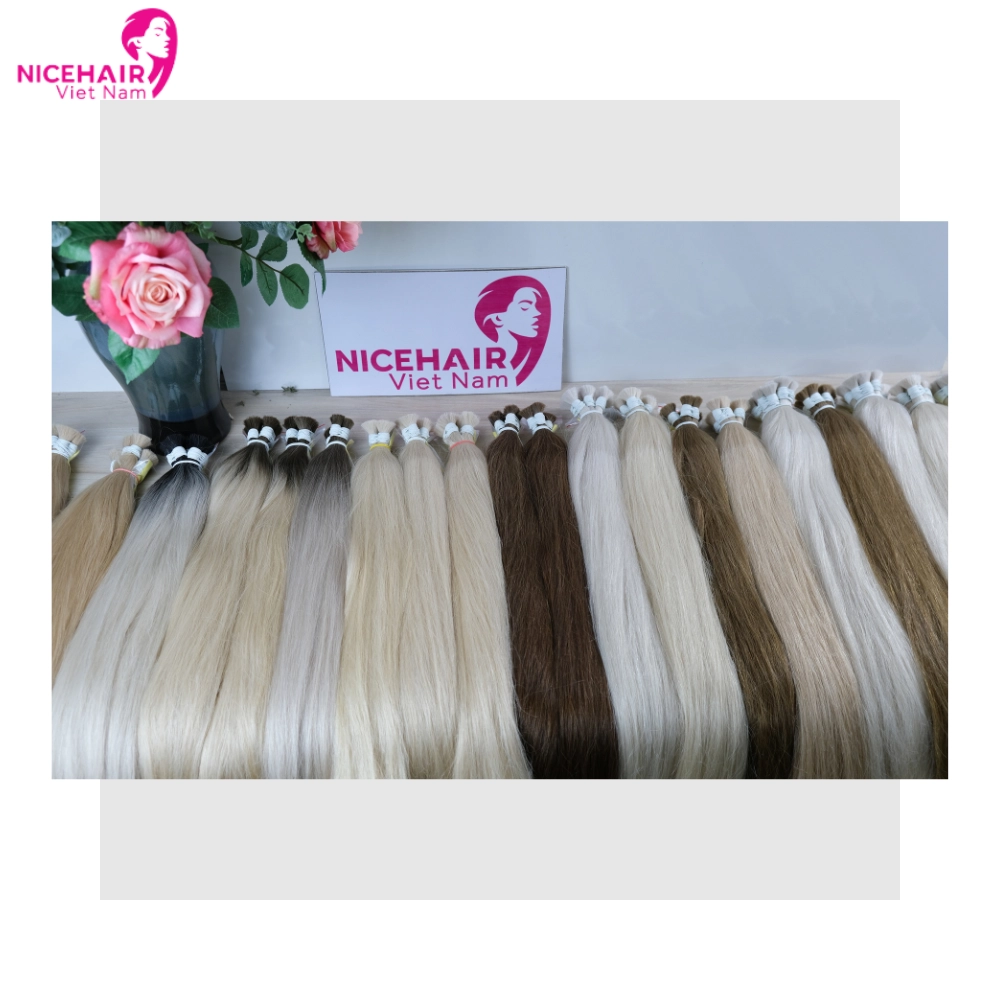
Explanation of common hair grading systems
In the world of wholesale hair, the use of grading systems is a prevalent practice to distinguish the quality of hair products. These grading systems typically use alphanumeric designations, such as 5A, 6A, 7A, 8A, 9A, and 10A, to classify different hair qualities. Let’s break down what these grades mean:
- 5A: Often considered the lowest grade, 5A hair is typically the most affordable option. It may come from a variety of sources and may have undergone minimal processing. While it may be budget-friendly, it may lack the superior qualities of higher grades.
- 6A: This grade represents hair of slightly higher quality than 5A. It tends to be smoother, shinier, and less prone to tangling. However, it still may not meet the standards of more premium grades.
- 7A: 7A hair is a step up in quality. It is often virgin hair (unaltered by chemical processes), with a smoother texture, better sheen, and less tangling compared to 5A and 6A.
- 8A: 8A hair signifies a high-quality product. It is typically virgin hair of excellent quality, with a consistent texture, minimal tangling, and a natural shine. This grade is popular among those seeking premium wholesale hair.
- 9A: 9A hair is considered luxury hair. It is exceptionally smooth, lustrous, and tangle-free. Buyers often expect 9A hair to be unprocessed virgin hair with superior quality.
- 10A: 10A is the highest grade in hair quality. It is often referred to as “super grade” or “top grade.” 10A hair is expected to be unprocessed, free from imperfections, and possess a stunning natural sheen.
How grading systems categorize hair based on quality attributes
Hair grading systems categorize hair based on various quality attributes, including:
- Texture: Grades reflect how smooth or coarse the hair is. Higher grades tend to have a smoother, silkier texture.
- Tangling: Grades consider the propensity of the hair to tangle. Higher grades have minimal tangling, making them easier to manage.
- Shine: The natural shine of the hair is an important factor. Higher-grade hair often has a more lustrous appearance.
- Processing: Grading systems may also take into account whether the hair is virgin (unprocessed) or has undergone chemical treatments. Virgin hair is typically of higher quality.
- Consistency: Higher-grade hair is expected to have a consistent texture and color from root to tip.
Understanding the significance of the “A” grade in hair quality
The “A” in hair grading systems plays a crucial role in determining the overall quality of wholesale hair. It signifies the level of excellence and purity in the hair product. A higher “A” grade generally implies that the hair is closer to its natural state, with fewer imperfections and a superior appearance.
For wholesale hair buyers and suppliers, understanding the significance of the “A” grade is essential. It helps both parties communicate their expectations and ensures that the purchased hair meets the desired quality standards. Buyers seeking top-tier hair products often prioritize higher “A” grades, while suppliers aim to provide products that meet or exceed these grading criteria to cater to their discerning clientele.
Quality criteria for wholesale hair
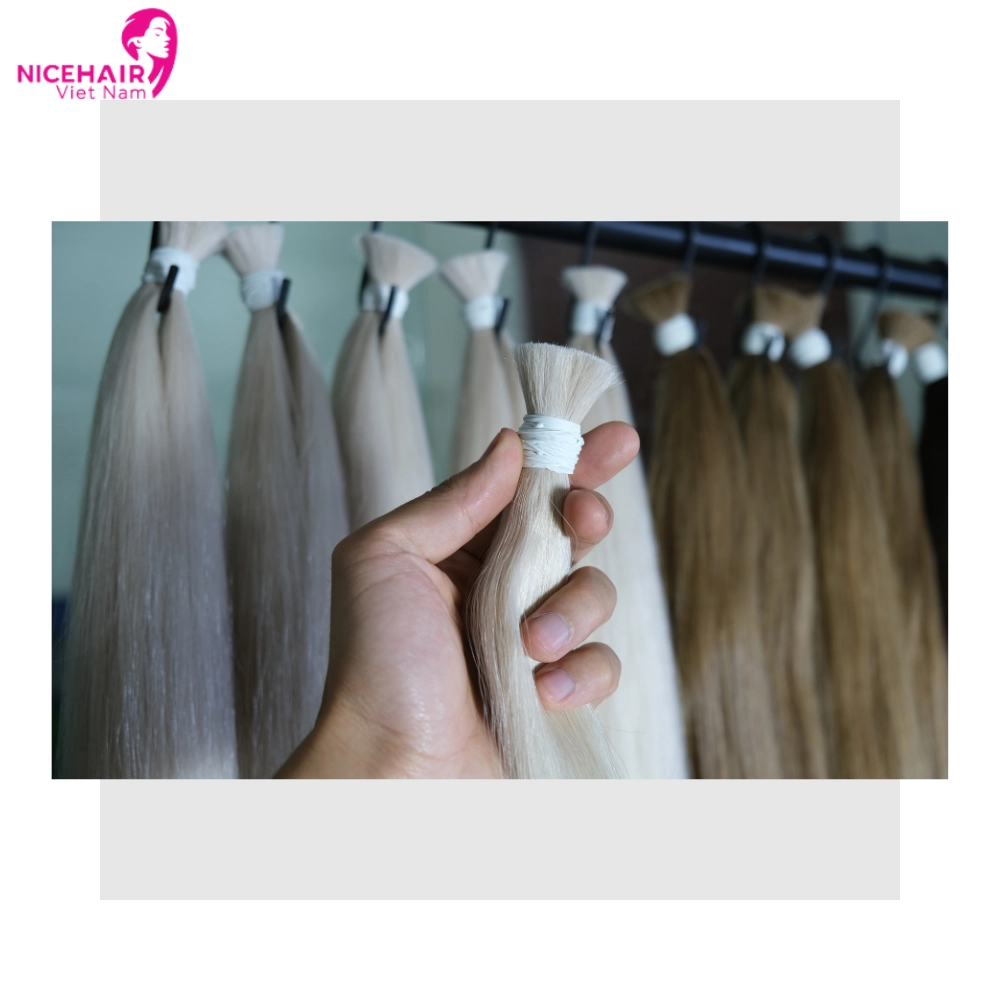
In the world of wholesale hair, assessing quality is a critical aspect of ensuring customer satisfaction. Quality criteria encompass a range of factors that determine the desirability and performance of hair products. This section will explore the key quality criteria for wholesale hair and their significance.
Texture: The importance of hair texture in quality assessment
The texture of wholesale hair is a fundamental quality criterion that greatly influences the overall look and feel of hair extensions, wigs, and weaves. Texture refers to the natural pattern of the hair strands, which can be categorized into various types, including straight, wavy, and curly. The importance of texture in quality assessment includes:
- Customer preference: Different customers have varying preferences for hair texture, depending on their desired look and style. Some may seek straight hair for a sleek appearance, while others prefer wavy or curly hair for a more voluminous and textured look.
- Matching natural hair: Quality wholesale hair should closely match the texture of a customer’s natural hair, ensuring a seamless blend and a more natural appearance.
- Durability: The texture of the hair can affect its durability. High-quality wholesale hair should maintain its natural texture over time, even after styling and washing.
Origin: Explaining the differences between hair origins
The origin of the hair, such as Indian, Brazilian, Peruvian, Vietnamese or others, plays a significant role in quality assessment in the wholesale hair industry. Each origin has distinct characteristics:
- Indian hair: Known for its fine texture and versatility, Indian hair is often sought after for its natural appearance and ability to blend well with various hair types.
- Brazilian hair: Brazilian hair is renowned for its thickness and strength. It is a preferred choice for those looking for voluminous and durable hair extensions.
- Peruvian hair: Peruvian hair is characterized by its softness and silkiness. It offers a smooth, lustrous appearance and is suitable for a wide range of hairstyles.
- Vietnamese hair: Vietnamese hair is gaining popularity for its quality and affordability. It is often sought after for its durability, fine texture, and natural look. Vietnamese hair can be versatile for styling and blending.
- Other hair origins: Apart from the aforementioned origins, hair from regions such as Malaysian, Cambodian, and Mongolian sources may also be available in the wholesale hair market. These sources may have their unique characteristics and appeal to specific customer preferences.
Understanding these origin differences allows buyers and suppliers to cater to specific customer preferences and quality expectations.
Cuticles: Why intact cuticles are a sign of high-quality hair
Cuticles are the outermost protective layer of hair strands. In high-quality wholesale hair, cuticles should be intact and aligned in the same direction. The significance of intact cuticles includes:
- Natural look and feel: Hair with intact cuticles has a smoother, shinier appearance and feels more natural to the touch.
- Reduced tangling: Intact cuticles help prevent friction between hair strands, reducing tangling and matting.
- Longevity: Hair with intact cuticles tends to last longer and maintain its quality over time, making it a wise investment for both suppliers and buyers.
Tangle and shedding resistance: Assessing hair’s resistance to tangling and shedding
High-quality wholesale hair should be resistant to tangling and shedding. These factors are crucial for customer satisfaction and the longevity of hair products:
- Tangling resistance: Hair that tangles easily can be frustrating for customers. Quality hair should remain tangle-free even after regular use and styling.
- Shedding resistance: Excessive hair shedding can be a major concern. Quality hair products are designed to minimize shedding, ensuring that the customer’s investment lasts longer.
Coloring and styling: The ability of hair to hold color and style
Quality hair should offer versatility when it comes to coloring and styling. It should be able to hold color well without excessive fading or damage. Additionally, it should withstand various styling methods, including heat styling and curling, without losing its texture or shape. This versatility allows customers to achieve their desired looks and enhances the overall quality of wholesale hair.
Quality control in hair production for wholesale hair
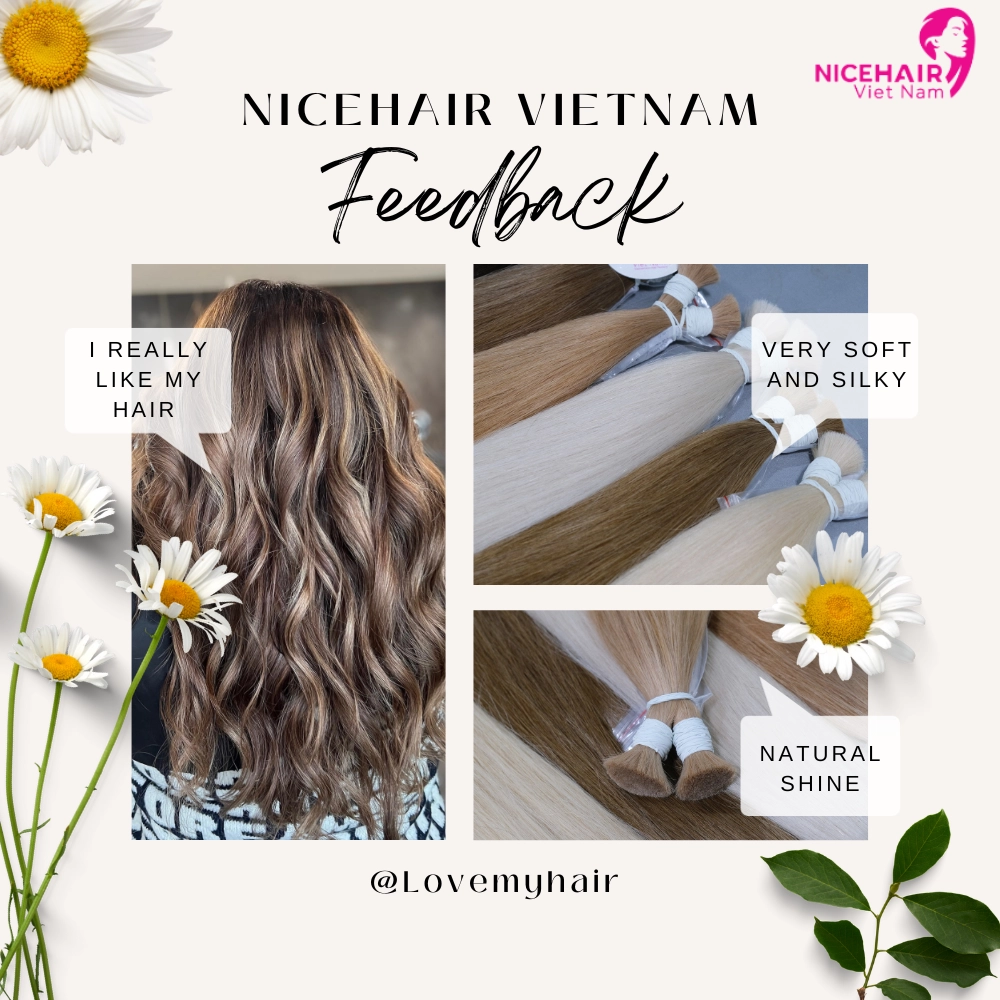
Quality control is a critical aspect of the wholesale hair industry, ensuring that hair products meet the established standards and customer expectations. In this section, we will delve into the various facets of quality control in the production of wholesale hair.
Supplier responsibility in maintaining quality
Suppliers play a pivotal role in maintaining the quality of wholesale hair products. Their responsibilities include:
- Sourcing: Selecting high-quality hair sources from reputable suppliers and regions known for quality hair production.
- Processing: Employing safe and industry-standard processing methods that do not compromise the integrity of the hair.
- Inspection: Conducting rigorous inspections to identify and discard hair that does not meet quality standards, such as hair with damaged cuticles or inconsistent textures.
- Packaging and storage: Ensuring proper packaging and storage conditions to prevent damage or contamination during transportation.
- Customer education: Providing customers with accurate information about the product, including its origin, texture, and care instructions.
Steps in the quality control process for wholesale hair
The quality control process for wholesale hair typically involves the following steps:
- Receiving and inspection: Suppliers receive raw hair materials and conduct an initial inspection to ensure they meet the desired quality criteria.
- Washing and processing: The hair undergoes washing and processing procedures to remove impurities and enhance its texture.
- Grading: Hair is categorized based on grading systems, which consider factors like texture, origin, and cuticle integrity.
- Cuticle inspection: A detailed examination of cuticles is performed to ensure they are intact, as damaged cuticles can affect hair quality.
- Tangle and shedding testing: Hair is tested for resistance to tangling and shedding, simulating real-world usage.
- Color and styling tests: The hair’s ability to hold color and style is assessed, ensuring its versatility.
Tools and techniques used to assess hair quality
Various tools and techniques are employed to assess hair quality in the wholesale hair industry:
- Microscopic examination: Microscopes are used to closely examine hair strands, cuticles, and any damage or imperfections.
- Tensile strength testing: This assesses the strength and elasticity of hair, helping to determine its durability.
- Color fastness testing: Hair is subjected to color treatments and washing to evaluate how well it retains color without fading.
- Styling tools: Styling tools like flat irons and curling irons are used to test how the hair responds to heat styling.
- Chemical testing: Chemical analysis can be employed to confirm the absence of harmful chemicals and to verify the hair’s authenticity.
The role of laboratory testing in quality assurance
Laboratory testing plays a vital role in quality assurance for wholesale hair. It provides objective and scientific data about the hair’s composition and characteristics. This includes checking for any chemical treatments, assessing hair’s resistance to damage, and verifying its quality attributes. Laboratory testing adds credibility to the quality control process, instilling confidence in both suppliers and buyers that the hair products meet industry standards and safety requirements.
Counterfeit and low-quality hair in wholesale hair market
The prevalence of counterfeit and low-quality hair
In the world of wholesale hair, the prevalence of counterfeit and low-quality products is a significant concern. Unscrupulous suppliers may offer hair that does not meet industry standards, either by adulterating genuine hair or selling entirely counterfeit products. This issue is particularly common in the market, where quality standards are critical.
Risks associated with purchasing subpar hair products
Purchasing subpar or counterfeit hair products can pose several risks:
- Customer dissatisfaction: Customers who receive low-quality hair products may experience issues such as tangling, shedding, and a lackluster appearance. This can lead to dissatisfaction and damage a supplier’s reputation.
- Wasted investment: Buyers may invest significant resources in what they believe is high-quality wholesale hair, only to discover they have received substandard or fake products, resulting in financial losses.
- Health concerns: In some cases, counterfeit hair products may contain harmful chemicals or allergens, posing health risks to those wearing them.
- Legal consequences: Selling counterfeit hair is illegal in many jurisdictions and can lead to legal action against both suppliers and buyers.
How to identify and avoid counterfeit hair
To safeguard against counterfeit and low-quality hair in the wholesale hair market, buyers and suppliers should take the following precautions:
- Source from reputable suppliers: Establish relationships with trusted suppliers who have a track record of providing genuine and high-quality wholesale hair products.
- Verify authenticity: Ask for documentation, such as invoices, certificates of authenticity, and lab test reports, to ensure the legitimacy of the products.
- Examine packaging: Scrutinize product packaging for signs of counterfeiting, such as misspelled words, incorrect logos, or poor-quality labels.
- Check for certifications: Genuine products often come with industry-recognized certifications, which can serve as a mark of authenticity and quality.
- Perform quality tests: Conduct quality tests on a sample of the hair products to assess their texture, durability, and resistance to tangling and shedding.
- Seek references: Request references or reviews from other customers who have purchased from the same supplier to gauge their satisfaction.
Certifications and standards in wholesale hair
Introduction to industry-recognized certifications
Industry-recognized certifications such as ISO (International Organization for Standardization) and GMP (Good Manufacturing Practices) play a pivotal role in ensuring the quality of wholesale hair products. These certifications establish standardized processes and guidelines for manufacturing and sourcing hair.
What is ISO?ISO (International Organization for Standardization) is a global body that develops and publishes standards to ensure quality, safety, and consistency across various industries. ISO standards cover areas such as quality management, environmental management, information security, and more, providing guidelines for organizations to follow for improved performance and compliance.
What is GMP? GMP (Good Manufacturing Practices) is a set of quality assurance and quality control guidelines and regulations designed to ensure the safe and consistent production of food, pharmaceuticals, medical devices, and other consumer products. GMP guidelines establish strict protocols for manufacturing, storage, distribution, and documentation to minimize risks to consumer health and product quality. Compliance with GMP standards is essential for companies operating in industries where product safety and quality are critical, such as pharmaceuticals and food manufacturing.
The significance of certifications in ensuring hair quality
Certifications are essential in maintaining consistency and quality across the wholesale hair industry. They signify that a supplier adheres to specific quality standards, which can include sourcing, processing, packaging, and safety measures. Certifications instill confidence in both suppliers and buyers that they are dealing with legitimate and quality-conscious businesses.
How to verify the authenticity of certifications provided by suppliers
To verify the authenticity of certifications provided by suppliers in the wholesale hair market, follow these steps:
- Check accreditation: Ensure that the certification body is accredited and recognized in the industry. Research the credibility of the certifying organization.
- Examine certification documents: Review the certification documents provided by the supplier, looking for official seals, registration numbers, and expiration dates.
- Contact certification authorities: Reach out to the relevant certification authorities or organizations to confirm the validity of the supplier’s certification.
- Request third-party verification: Consider obtaining third-party verification or audits to independently assess whether the supplier meets the specified certification standards.
Ethical and sustainable sourcing in the wholesale hair industry
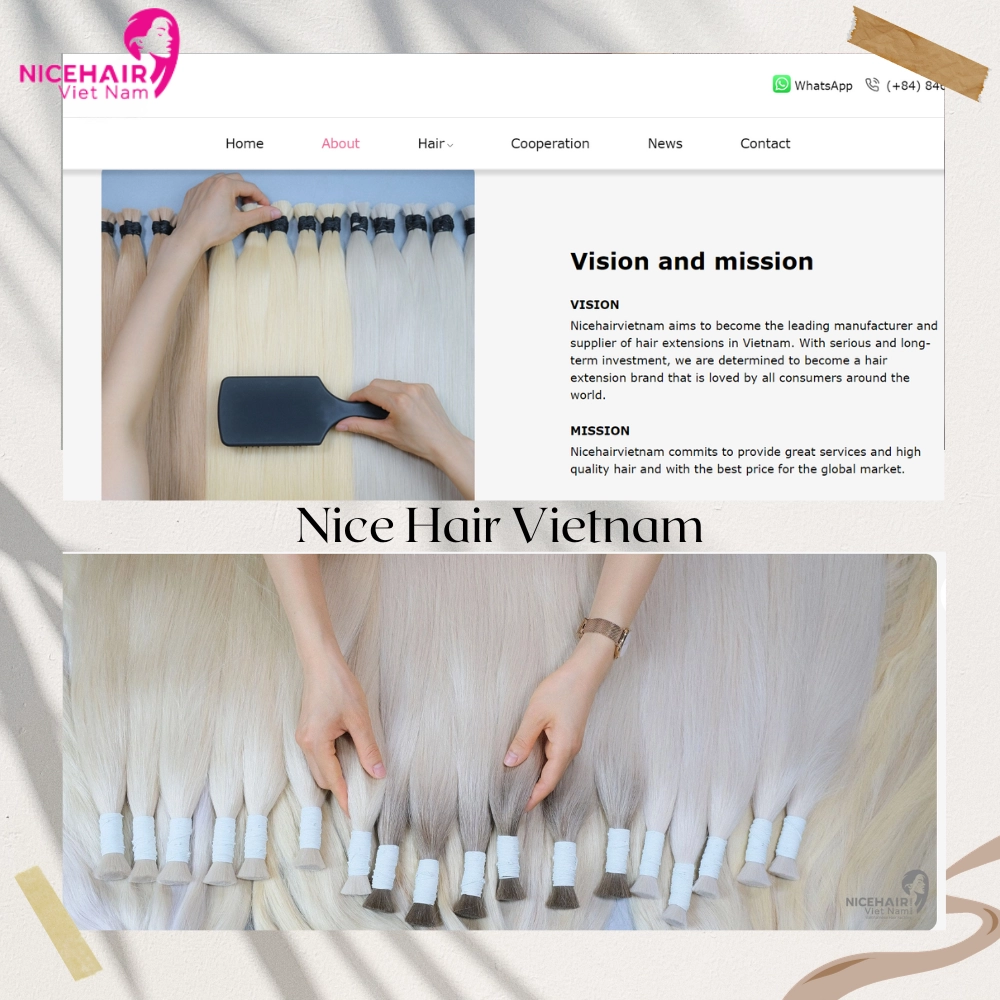
Importance of ethical sourcing in the hair industry
Ethical sourcing is of paramount importance in the wholesale hair industry. It entails ensuring that the hair used in products is obtained in a humane and socially responsible manner. The significance of ethical sourcing includes:
- Human rights: Ethical sourcing safeguards the rights and well-being of individuals involved in the hair supply chain, from harvesters to factory workers.
- Transparency: It promotes transparency in the sourcing process, allowing customers to make informed choices about the products they purchase.
- Reputation: Companies that prioritize ethical sourcing build trust with their customers and enhance their reputation, fostering loyalty and positive brand image.
Sustainable practices in the procurement of wholesale hair
Sustainability is increasingly crucial in the hair industry. Sustainable practices encompass responsible sourcing, minimizing waste, and reducing environmental impact. Key aspects of sustainable sourcing in wholesale hair include:
- Responsible harvesting: Sustainable sourcing involves harvesting hair in ways that minimize harm to the environment and local communities.
- Recycling and reuse: Reducing waste by recycling and reusing hair products and packaging materials.
- Eco-friendly processing: Utilizing eco-friendly processing methods that minimize chemical use and energy consumption.
- Carbon footprint reduction: Implementing practices to reduce the carbon footprint associated with transporting and processing hair.
Social and environmental considerations in quality standards
Quality standards in the wholesale hair industry should encompass social and environmental considerations. These factors may include:
- Ethical labor practices: Ensuring that labor practices throughout the supply chain are fair and just, protecting workers’ rights.
- Environmental impact: Assessing the environmental impact of sourcing, processing, and shipping hair products, and striving to reduce that impact.
- Sustainability certifications: Adhering to and seeking certifications related to sustainability and ethical sourcing, such as Fair Trade or organic certifications.
Consumer education in the wholesale hair industry
The role of consumer education in promoting quality standards
Consumer education is instrumental in promoting and maintaining quality standards in the wholesale hair industry. Educated consumers are better equipped to make informed purchasing decisions, fostering a market for high-quality products.
How consumers can make informed choices when purchasing wholesale hair
Consumers can make informed choices by:
- Researching suppliers: Investigate the reputation and practices of wholesale hair suppliers, including their commitment to ethical and sustainable sourcing.
- Understanding grading: Familiarize themselves with hair grading systems to ensure they select products that meet their quality expectations.
- Reading labels and certifications: Scrutinize product labels and certifications to verify the authenticity of claims regarding hair quality and sourcing practices.
Resources and platforms for learning about hair quality
Consumers can access various resources and platforms to learn more about hair quality:
- Online reviews: Read customer reviews and testimonials to understand others’ experiences with specific products and suppliers.
- Educational websites: Visit websites and forums dedicated to hair care and quality standards, where experts and consumers share insights.
- Social media: Follow hair experts and influencers on social media platforms for tips and recommendations on high-quality hair products.
Challenges and pitfalls in the wholesale hair industry
Common challenges in maintaining and assessing quality
The wholesale hair industry faces several challenges in maintaining and assessing quality, including:
- Counterfeit products: The presence of counterfeit and low-quality hair products in the market.
- Ethical concerns: Ensuring ethical sourcing and labor practices throughout the supply chain.
- Sustainability: Implementing sustainable practices in an industry that traditionally has not prioritized environmental concerns.
Pitfalls to avoid when dealing with wholesale hair suppliers
Buyers and suppliers should be cautious and avoid common pitfalls in the wholesale hair industry, such as:
- Lack of due diligence: Failing to thoroughly research suppliers and their sourcing practices.
- Overlooking certifications: Neglecting to verify the authenticity of certifications provided by suppliers.
- Cutting corners: Opting for lower-cost options without considering the potential compromise in quality.
Case studies illustrating quality-related issues
Examining real-world case studies can provide valuable insights into quality-related issues in the wholesale hair industry. These cases can serve as cautionary tales and examples of successful quality management practices, helping both buyers and suppliers navigate the challenges and pitfalls they may encounter.

